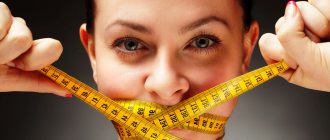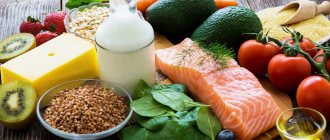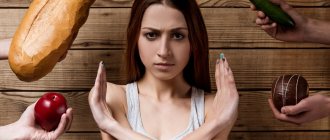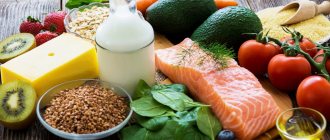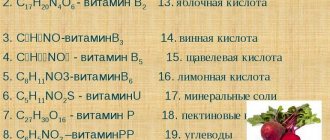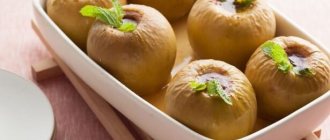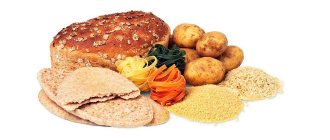General rules
Hemodialysis is a method of treating patients with end-stage chronic renal failure , the essence of which is the use of hardware methods to cleanse the patient's body of toxic substances and normalize the water-salt balance (programmed hemodialysis / peritoneal dialysis ). Unfortunately, regular hemodialysis does not fully replace renal function, which contributes to the persistence of a number of metabolic characteristic of patients with chronic renal failure.
In addition, dialysis has side effects that lead to the loss of a number of food nutrients and the development of protein-energy malnutrition. Therefore, the condition of patients who are on hemodialysis is largely determined by proper diet therapy. The diet of such patients depends on a number of factors: the frequency/duration of procedures, the degree and nature of metabolic changes, the characteristics of dialysis solutions and the presence/severity of complications. Thus, nutrition during hemodialysis is a dynamic concept that requires individual selection of diet.
In addition to maintaining the necessary nutritional status of the patient, therapeutic nutrition is aimed at slowing the development of cardiovascular diseases and cerebrovascular changes, preventing mineral-bone disorders and correcting metabolic disorders resulting from uremic intoxication, and often inadequate kidney dialysis. At the same time, despite the need for an individual approach to the nutrition of patients undergoing regular hemodialysis, there are general principles of nutrition, which are presented below.
The diet for kidney hemodialysis is based on treatment table No. 7 G according to Pevzner, which in a number of ways differs from therapeutic nutrition in the pre-hemodialysis period. The diet is aimed at a balanced supply of food macro/micronutrients, taking into account individual metabolic characteristics and relieving the side effects of hemodialysis.
The diet provides for an increase in protein consumption to a level of 1.0-1.2 g/kg body weight/day (60-75 g), which is caused by protein losses during the hemodialysis procedure, a deterioration in its digestion and an increase in the rate of its breakdown. It is with this amount of protein consumption that the level of albumin and a positive/neutral nitrogen balance is maintained. However, protein consumption at this level does not induce uremic intoxication.
Insufficient protein content in the diet contributes to the development of protein-energy malnutrition (decrease in body weight index, levels of prealbumin , albumin , cholesterol ) and increases the risk of death. Excessive protein content in the diet contributes to an increase in nitrogenous waste in the blood and the development of uremia. Protein should be predominantly of animal origin, the source of which can be dietary red meat, rabbit, poultry, moderately fatty fish, chicken eggs, cottage cheese, milk and fermented milk drinks.
The energy value of the daily diet is calculated from the ratio of 35-40 kcal/kg/day (2800-2900 kcal/day). At the same time, a neutral energy balance is achieved with a consumption of 35 kcal/kg/day. Elderly people or those on bed rest are allowed to reduce the energy value of the diet to 2400-2500 Kcal/day.
The content of fats and carbohydrates in the diet must correspond to the physiological nutritional standards of a particular patient and provide the necessary energy value of the diet. On average, 100-110 g of fat and 400-450 g of carbohydrates per day. However, given the frequent disorders of lipid metabolism, the diet of such patients should not be overloaded with fats rich in cholesterol and saturated fatty acids.
It is advisable to include in the diet various vegetable oils and fish oils, which are sources of polyunsaturated fatty acids. In case of poor appetite and signs of hypoglycemia , it is permissible to increase the content of easily digestible carbohydrates in the diet (confectionery, honey, jam, jelly, mousses). However, if you have diabetes , carbohydrates in the diet are limited.
The content of table salt and free liquid has a special place in the diet of hemodialysis patients. Their quantity is determined individually depending on the level of blood pressure and the degree of water retention in the body. During hemodialysis, as a rule, the amount of urine excreted continuously decreases, which leads to sodium retention in the body, and even a slight increase in its consumption increases thirst and increases the consumption of free fluid, which contributes to the development of arterial hypertension and edema .
In addition, excessive salt consumption in hemodialysis patients leads to an increase in body weight in the period between hemodialysis sessions, myocardial hypertrophy, and the development of heart failure . Therefore, the sodium content in the diet is limited to 2.0-2.8 g/day (4-5 g of table salt). The food is not salted. In the absence of edema and high blood pressure, 2-3 g of salt are acceptable in the diet for adding salt to prepared foods, and if they are present, salt is completely excluded from the diet, and salty foods are also excluded - semi-finished products, canned food, smoked meats and pickles.
The amount of free fluid consumed is calculated from the ratio: 600 ml + daily diuresis volume + extrarenal causes of dehydration. On average - 800-1000 ml of liquid. To monitor fluid intake, it is necessary to weigh the patient daily and determine urine output for the previous day. The increase in body weight between dialysis sessions should not be more than 1.5-2 kg. Excessive consumption of free fluid promotes overhydration hyponatremia develops , and edema appears.
To compensate for the loss of vitamins during regular hemodialysis, it is recommended to supplement the diet with multivitamin preparations (group B, C, E), 1-2 tablets per day and taking vitamin D , since such patients develop D-hypovitaminosis . Additional intake of beta-carotene and vitamin A is undesirable.
The intake rates for phosphorus, potassium and calcium are determined primarily by laboratory and clinical indicators. In hemodialysis patients, hyperkalemia is associated with a high risk of death. Therefore, the amount of potassium intake in dialysis patients should not exceed 3 g potassium/day. Potassium is found mainly in fruits/dried fruits (raisins, dates, apricots, figs), bananas, nuts (peanuts, walnuts, pistachios, hazelnuts), legumes, mushrooms, garden greens (spinach, parsley, dill), rice, baked goods from wholemeal flour, vegetable broths, chocolate, fruit juices, ketchup, instant coffee, cocoa. The patient can eat no more than 1 vegetable and 1 fruit (in any form) per day. At the same time, raw vegetables and fruits must be peeled, washed with water and left in water for 2-3 hours, since potassium dissolves well in water.
The requirement for magnesium in patients on hemodialysis is 200–300 mg/day. Hypermagnesemia due to the relatively low content of magnesium in food and its low absorption in the intestine (40-50%) is less common than hyperkalemia, however, it is important to control the prescription of drugs containing magnesium ( magnesium sulfate , antacids), since it can cause severe hypermagnesemia with respiratory depression, neurological disorders.
The calcium requirement of patients on hemodialysis is at least 1.5 g/day. Excessive calcium intake is caused by the prescription of calcium-containing agents designed to bind phosphates ( calcium acetate , calcium carbonate , calcium gluconate ). Excessive calcium intake leads to hypercalcemia as well as vascular/tissue calcification. If there is no need to control phosphorus with calcium-containing products, it is recommended to reduce calcium intake to 900-1000 mg/day.
The need for phosphorus in the diet of a healthy person is 1600-1700 mg/day. During one hemodialysis procedure, an average of 250 mg of phosphorus is removed. That is, hemodialysis does not ensure the removal of phosphorus from the body in the required amount and cannot of hyperphosphatemia Since increased phosphorus content significantly increases the risk of myocardial infarction and the development of cardiovascular diseases, phosphorus intake during dialysis should be strictly limited. Since organic phosphorus is the most bioavailable, it is necessary to limit the content of animal products first of all to animal products containing it in large quantities and to a lesser extent to plant products.
Considering that protein is the main source of phosphorus, it seems advisable to include in the diet foods with a minimum phosphorus content in relation to protein - egg whites, sea fish, chicken drumstick, beef, turkey fillet, pork, cod and limit foods such as cheese, milk, muesli, bran, whole grain bread, legumes, cocoa, cereals, cottage cheese, nuts. If it is impossible to normalize phosphorus levels, calcium-containing/calcium-free drugs that bind phosphates are prescribed.
The diet for kidney hemodialysis involves the exclusion of a number of foods from the diet. List of products prohibited for consumption during dialysis: concentrated broths with meat/fish/mushrooms, fatty meat of animals and waterfowl, legumes (except soy protein), sausages, smoked meats, liver, brains, kidneys, canned snack foods, hard/processed cheeses, salted/fermented foods and vegetables rich in oxalic acid, hard-boiled eggs, refractory animal fats, margarine, chocolate, peaches, apricots, grapes, cherries, figs, black currants, bananas, dried fruits, peppers, cinnamon, horseradish, mustard, cocoa .
To diversify the diet and improve the taste of salt-free dishes, various methods of culinary processing of foods are used, including frying and stewing, adding spices, natural vinegar, citric acid, and using homemade sauces.
To improve suppressed appetite, the list of products can be expanded by including alcoholic beverages in the diet (in the absence of contraindications) - dry/semi-dry grape wine, vermouth, sherry or spirits, the volume of consumption of which (in terms of ethyl alcohol) should not be consumed by women exceed 20 g/day and 40 g/day for men. It is advisable to eat meals in small portions 5-6 times a day.
General diet rules
The diet for kidney dialysis provides for an increase in the amount of protein to 60 g per day, and more than 80% of the protein should be of animal origin. The proportion of carbohydrates and fats in the diet also increases - up to 450 and 110 g, respectively.
The need for energy is especially high in hemodialysis patients. Typically it is 40 kcal/1 kg of weight, although it may be slightly higher or lower depending on the age and physical activity of the patient.
The volume of fluid consumed during kidney hemodialysis is calculated based on the diuresis of the previous day + 500 ml for skin losses. On average, this is no more than 1 liter of water per day. To control the amount of fluid taken, weighing is performed before dialysis - the increase in body weight should not exceed 1.5–2 kg.
If there is a tendency to develop hyperkalemia, and sooner or later it occurs in all kidney patients, it is necessary to strictly limit the diet to foods containing a lot of potassium. Normally, a patient on kidney hemodialysis should not receive more than 2.0 g of the substance per day.
During treatment, it is very important to eat at least 6 times a day. This eating regimen will help maintain optimal levels of nutrients in the body and feel energized throughout the day.
Authorized Products
The diet of hemodialysis patients includes the consumption of salt-free bread and vegetarian soups with the addition of vegetables and cereals, as well as cabbage soup, beetroot soup, and borscht. For main courses, we recommend lean types of red meat (veal, beef), chicken, turkey, rabbit, which are served boiled. Pre-boiling the meat is mandatory, since the process of cooking in large quantities of water removes nitrogenous substances from the food.
After boiling, the meat can be further cooked. For fish, low-fat sea fish or river fish (pollock, pike, hake, pike perch, cod), which are prepared in a similar way, are recommended.
Vegetables and garden herbs (tomatoes, carrots, dill, lettuce, cucumbers, beets, parsley, cauliflower, tomatoes, green onions, potatoes) that are boiled or stewed are allowed as side dishes. Chicken eggs are allowed to be consumed in the amount of 2-4 pieces per week in the form of a steamed protein omelet or soft-boiled. In the absence of restrictions, it is allowed to include milk and fermented milk products in the diet in the amount of 200-300 g per day.
Homemade white sauces with sour cream/milk, unsalted vegetable vinaigrette, and vegetable/fruit salads are allowed. Unsalted butter and various vegetable oils are recommended as fats. Fruit/berries can be consumed in various forms, taking into account the potassium content, if its limitation is prescribed to the patient. Drinks you can drink include rosehip infusion, weak tea and coffee, and freshly prepared fruit juices.
Table of permitted products
| Proteins, g | Fats, g | Carbohydrates, g | Calories, kcal | |
Vegetables and greens | ||||
| zucchini | 0,6 | 0,3 | 4,6 | 24 |
| cauliflower | 2,5 | 0,3 | 5,4 | 30 |
| potato | 2,0 | 0,4 | 18,1 | 80 |
| carrot | 1,3 | 0,1 | 6,9 | 32 |
| tomatoes | 0,6 | 0,2 | 4,2 | 20 |
| pumpkin | 1,3 | 0,3 | 7,7 | 28 |
Fruits | ||||
| watermelon | 0,6 | 0,1 | 5,8 | 25 |
| melon | 0,6 | 0,3 | 7,4 | 33 |
| apples | 0,4 | 0,4 | 9,8 | 47 |
Berries | ||||
| strawberry | 0,8 | 0,4 | 7,5 | 41 |
Cereals and porridges | ||||
| buckwheat (kernel) | 12,6 | 3,3 | 62,1 | 313 |
| cereals | 11,9 | 7,2 | 69,3 | 366 |
| white rice | 6,7 | 0,7 | 78,9 | 344 |
| sago | 1,0 | 0,7 | 85,0 | 350 |
Confectionery | ||||
| jam | 0,3 | 0,2 | 63,0 | 263 |
| jelly | 2,7 | 0,0 | 17,9 | 79 |
| milk candies | 2,7 | 4,3 | 82,3 | 364 |
| fondant candies | 2,2 | 4,6 | 83,6 | 369 |
| paste | 0,5 | 0,0 | 80,8 | 310 |
Raw materials and seasonings | ||||
| cinnamon | 3,9 | 3,2 | 79,8 | 261 |
| honey | 0,8 | 0,0 | 81,5 | 329 |
| dried parsley | 22,4 | 4,4 | 21,2 | 276 |
| sugar | 0,0 | 0,0 | 99,7 | 398 |
| milk sauce | 2,0 | 7,1 | 5,2 | 84 |
| sour cream sauce | 1,9 | 5,7 | 5,2 | 78 |
| caraway | 19,8 | 14,6 | 11,9 | 333 |
Dairy | ||||
| milk | 3,2 | 3,6 | 4,8 | 64 |
| kefir | 3,4 | 2,0 | 4,7 | 51 |
| cream | 2,8 | 20,0 | 3,7 | 205 |
| sour cream | 2,8 | 20,0 | 3,2 | 206 |
| curdled milk | 2,9 | 2,5 | 4,1 | 53 |
| acidophilus | 2,8 | 3,2 | 3,8 | 57 |
| yogurt | 4,3 | 2,0 | 6,2 | 60 |
Meat products | ||||
| pork | 16,0 | 21,6 | 0,0 | 259 |
| boiled beef | 25,8 | 16,8 | 0,0 | 254 |
| boiled beef tongue | 23,9 | 15,0 | 0,0 | 231 |
| boiled veal | 30,7 | 0,9 | 0,0 | 131 |
| rabbit | 21,0 | 8,0 | 0,0 | 156 |
Bird | ||||
| boiled chicken | 25,2 | 7,4 | 0,0 | 170 |
| turkey | 19,2 | 0,7 | 0,0 | 84 |
Eggs | ||||
| chicken eggs | 12,7 | 10,9 | 0,7 | 157 |
Oils and fats | ||||
| peasant unsalted butter | 1,0 | 72,5 | 1,4 | 662 |
| corn oil | 0,0 | 99,9 | 0,0 | 899 |
| olive oil | 0,0 | 99,8 | 0,0 | 898 |
| sunflower oil | 0,0 | 99,9 | 0,0 | 899 |
| ghee | 0,2 | 99,0 | 0,0 | 892 |
Non-alcoholic drinks | ||||
| coffee with milk and sugar | 0,7 | 1,0 | 11,2 | 58 |
Juices and compotes | ||||
| pumpkin juice | 0,0 | 0,0 | 9,0 | 38 |
| * data is per 100 g of product | ||||
Fully or partially limited products
The diet for patients undergoing hemodialysis involves the exclusion from the diet of concentrated meat/fish/mushroom broths, various refractory animal fats, fatty meats, foods high in salt (canned food, hard/processed cheeses, chips, bouillon cubes, salted nuts, sausages, sauces, marinades, ketchups, salted butter, margarine, canned vegetables), legumes, liver, brains, kidneys, smoked meats, hard-boiled eggs, cereals and pasta, dairy products.
Limit the consumption of foods containing a lot of potassium - curry, mushrooms, coffee, milk powder, fruit juices, sorrel, bananas, sea fish, seeds, sesame, nuts, soy products, chocolate, milk formula, dried apples, peanut butter, dried fruits, rhubarb , ketchup, spinach, beets, beer, avocado, fruit juices, tomato sauce, apricots, molasses, grapes, cherries, figs, lentils.
Products containing phosphorus are subject to restrictions: bran, nuts, whole grain bread, cereals, cocoa milk, cheese, eggs, legumes, muesli, cottage cheese. Strong tea/coffee, cocoa, and sodium mineral waters are excluded from drinks.
Table of prohibited products
| Proteins, g | Fats, g | Carbohydrates, g | Calories, kcal | |
Vegetables and greens | ||||
| vegetables legumes | 9,1 | 1,6 | 27,0 | 168 |
| sauerkraut | 1,8 | 0,1 | 4,4 | 19 |
| green onion | 1,3 | 0,0 | 4,6 | 19 |
| bulb onions | 1,4 | 0,0 | 10,4 | 41 |
| canned cucumbers | 2,8 | 0,0 | 1,3 | 16 |
| pickles | 0,8 | 0,1 | 1,7 | 11 |
| radish | 1,2 | 0,1 | 3,4 | 19 |
| white radish | 1,4 | 0,0 | 4,1 | 21 |
| turnip | 1,5 | 0,1 | 6,2 | 30 |
| celery | 0,9 | 0,1 | 2,1 | 12 |
| canned tomatoes | 1,1 | 0,1 | 3,5 | 20 |
| horseradish | 3,2 | 0,4 | 10,5 | 56 |
| garlic | 6,5 | 0,5 | 29,9 | 143 |
| spinach | 2,9 | 0,3 | 2,0 | 22 |
| sorrel | 1,5 | 0,3 | 2,9 | 19 |
Fruits | ||||
| apricots | 0,9 | 0,1 | 10,8 | 41 |
| bananas | 1,5 | 0,2 | 21,8 | 95 |
| nectarine | 0,9 | 0,2 | 11,8 | 48 |
| peaches | 0,9 | 0,1 | 11,3 | 46 |
Mushrooms | ||||
| mushrooms | 3,5 | 2,0 | 2,5 | 30 |
| marinated mushrooms | 2,2 | 0,4 | 0,0 | 20 |
Cereals and porridges | ||||
| semolina | 10,3 | 1,0 | 73,3 | 328 |
| corn grits | 8,3 | 1,2 | 75,0 | 337 |
| pearl barley | 9,3 | 1,1 | 73,7 | 320 |
| millet cereal | 11,5 | 3,3 | 69,3 | 348 |
Flour and pasta | ||||
| pasta | 10,4 | 1,1 | 69,7 | 337 |
Chocolate | ||||
| chocolate | 5,4 | 35,3 | 56,5 | 544 |
Raw materials and seasonings | ||||
| mustard | 5,7 | 6,4 | 22,0 | 162 |
| ginger | 1,8 | 0,8 | 15,8 | 80 |
| ketchup | 1,8 | 1,0 | 22,2 | 93 |
| mayonnaise | 2,4 | 67,0 | 3,9 | 627 |
| ground black pepper | 10,4 | 3,3 | 38,7 | 251 |
| tomato sauce | 1,7 | 7,8 | 4,5 | 80 |
Cheeses and cottage cheese | ||||
| cottage cheese | 17,2 | 5,0 | 1,8 | 121 |
Meat products | ||||
| salo | 2,4 | 89,0 | 0,0 | 797 |
Bird | ||||
| smoked chicken | 27,5 | 8,2 | 0,0 | 184 |
| duck | 16,5 | 61,2 | 0,0 | 346 |
| smoked duck | 19,0 | 28,4 | 0,0 | 337 |
| goose | 16,1 | 33,3 | 0,0 | 364 |
Fish and seafood | ||||
| dried fish | 17,5 | 4,6 | 0,0 | 139 |
| smoked fish | 26,8 | 9,9 | 0,0 | 196 |
| black caviar | 28,0 | 9,7 | 0,0 | 203 |
| salmon caviar granular | 32,0 | 15,0 | 0,0 | 263 |
| canned fish | 17,5 | 2,0 | 0,0 | 88 |
Oils and fats | ||||
| animal fat | 0,0 | 99,7 | 0,0 | 897 |
| cooking fat | 0,0 | 99,7 | 0,0 | 897 |
Juices and compotes | ||||
| tomato juice | 1,1 | 0,2 | 3,8 | 21 |
| * data is per 100 g of product | ||||
Liquid and sodium
Liquid helps maintain the structure and temperature of our body and promotes cell activity. When the kidneys cannot cope with removing excess fluid from the body, there is a need to limit its daily intake.
Sodium chloride (salt) is important for regulating fluid levels, nerve transmission, and muscle function. After eating salty food, you feel thirsty. Excess sodium causes fluid retention. This can lead to swelling and high blood pressure and/or difficulty breathing. Sodium is found primarily in table salt and various processed foods (such as sausages, canned goods, frozen pizza), but salt is also present in many other foods, such as bread, cheese and ham. Limiting your salt intake will make it easy to reduce the amount of fluid you consume daily.
The more fluid that needs to be removed during peritoneal dialysis, the more inconveniences you will have to deal with. Remember: liquids include not only drinks, but also some foods, such as gravies and soups, sauces, as well as vegetables and fruits. Limiting your fluid intake is not an easy step, but by following our advice, you will very soon feel that everything is much simpler than it initially seemed.
Tips to help reduce your fluid intake:
There are ways to combat thirst in hot weather that help you maintain a feeling of freshness. When choosing drinks, give preference to cold ones rather than hot ones.
- If your doctor allows, take the tablets with fresh apple juice or applesauce.
- If you suffer from diabetes, monitor your blood glucose levels. A high level will only increase thirst.
- Use smaller cups and glasses for drinks
- You can get rid of dry mouth in the following ways: try rinsing your mouth with a special mouthwash or brushing your teeth. Put a lollipop (lemon flavored) or a piece of lemon or lime in your mouth - this will also help fight thirst. You can also try freezing some of your daily water intake and dissolving ice cubes.
- Don't add salt to your food
- Avoid foods high in sodium (processed foods, sausages, cheese, salami)
- Replace salt with herbs and spices
- Do not use salt substitutes. They may contain potassium
- Avoid foods that contain sodium as one of the five essential elements (see product label for list of elements)
Reviews and results
A strict diet for patients on hemodialysis is a vital necessity, especially for patients with high blood pressure, edema and disorders of phosphorus-calcium metabolism. According to patient reviews, it is difficult to get used to unsalted or low-salt food; the dishes are tasteless, but there is no choice.
- “... After toxic damage to the kidneys and the development of chronic kidney disease, I was prescribed hemodialysis. There were bad tests, constantly elevated blood pressure, and swelling. A therapeutic salt-free diet was prescribed. It was very difficult to get used to unsalted food right away. Garden herbs (parsley, dill, garlic, onions, parsnips) helped out, and I also made sauces based on milk and cream. I had to strictly control my diet. I cook everything in vegetable oil. So far I’m sticking to the diet normally, and there’s nowhere to go, you need to adapt if you want to live.”
Recipes for delicious and healthy dishes during dialysis
For many people, the diet menu means eating bland, tasteless (but healthy) food. This is a misconception.
We bring to your attention three top examples of recipes from reviews on thematic forums:
- “Buckwheat in a merchant’s style.” Boiled poultry, lightly fry in vegetable oil until crusty. Then rinse the cereal and heat it in a frying pan. Next, you need to take a dish with thick walls (preferably a cauldron), place all the ingredients, add water and simmer. You can add chopped tomatoes or sour cream.
- "Bread in the oven." Flour (1 cup) is mixed with spices (only seasonings approved by a doctor are used). Turmeric, cumin, basil, coriander and other flavorings should be sprinkled to taste and without harm to health. Beat the egg into the resulting mixture and add a little vegetable oil. Mix everything thoroughly. We make flat cakes from the dough and bake for half an hour.
- Salad “Hrum-hrum”. Raw carrots and beets are cut into strips. Add crushed garlic and press lightly with a press. Potatoes are chopped in the same way as other vegetables, then washed in plenty of water (2 hours). After soaking for a long time, the root vegetable should be fried until golden brown. Mix everything, add a “drop” of salt and mayonnaise.
Such recipes will not leave anyone indifferent. The listed dishes can be safely offered to guests, they will not even guess that they were treated to special “delicacies”.

